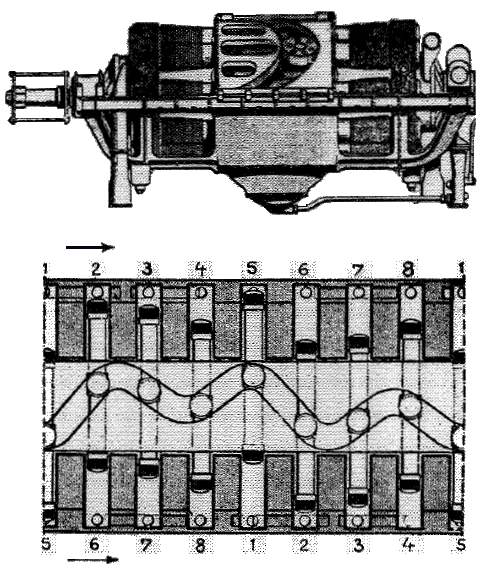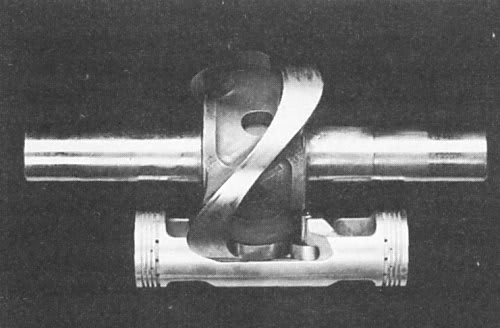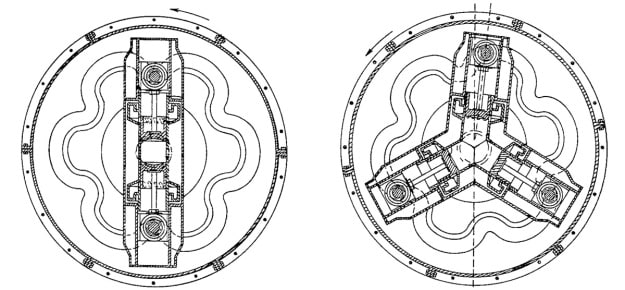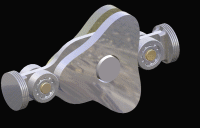This guy never should have gotten a patent. His root claim ("[a dual piston engine], wherein each of the pistons drives a reciprocating crankshaft that protrudes through a cylinder wall and cooperatively rotate a pair of rotors by engaging substantially sinusoidal cam tracks in the rotors.") as there are a number of axial cam driven engines in prior art. The oldest is likely the Laage Axial Cam aero Engine of 1923:
The infamous Dyna-Cam engine of the early 1940's is quite similar as well:
The patent language from the first paragraph above is so broad it also encompasses the Michel Engine of 1921:
The advantage of a cam driven engine is that it allows precise and somewhat arbitrary piston movement (within the bounds of material stresses and friction), a capability particularly valuable in port timing of two stroke engines. A cam driven engine can also have multiple strokes per rotation which can be exploited to mechanize a reduction gear, a capability particularly useful in aircraft engines as propeller efficiency is greatest near 3,000 RPM. These advantages come at the expense of cam loading and friction, and no engine I'm aware of has been able to overcome these problems.
I address the cam issues in my design by using a large number of small lightweight pistons, far smaller than conventional wisdom dictates, to minimize loads due to centrifugal forces. I also employ a very rapid expansion phase to keep the cam contact angles in the most efficient region. Finally, I employ a reduction gear in the cam design in order to keep radial surface speeds down. In spite of these measures, the cams remain at the very top of my risk list, and my first hardware experiments will explore their operation (I plan to construct the cam system first and run it on a motoring dyno to get accurate FMEP measurements which I will then incorporate into my thermodynamic models to see if the engine is worth pursuing further.
P.S. Anyone proposing a new engine should carefully review the catalog of old engines at




